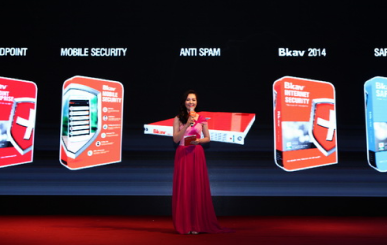Computer virus has a long history of development, and its evolution has been in line with software and hardware technology advance. When the operating system developed, the virus was able to improve itself to live on this new system.
Virus can be written just for fun or for malicious purposes. For whatever goal, malware authors also have waged an endless battle which we have to strain every nerve to combat.
There are a lot of opinions on the virus origin. This is also understandable since at that time one had no idea that there would be such a populous and dangerous community of virus. This means that computer virus did not draw much public attention until it caused serious consequences. Most of theories surrounding the virus origin include the following milestones:
1983 – Core War game principles revealed
Core War is a mind game between two programmers. Each gamer installed a reproducible program called Organism on the computer memory. When the game started, one gamer attempted to destroy his opponent's organism and reproduce his. The one who had more organism copies was the winner. Currently this game still attracts a great number of players. (Visit http://www.corewars.org/ for more details of the game).
"Core War" had been kept as a secret up to 1983. However, Ken Thompson, the author of the first version of UNIX operating system disclosed this game when he received an honored award of the computerdom - A.M Turing Award. He raised an idea of computer virus based on the game "Core War" in his speech. Also in this year, Dr. Frederik Cohen proved the existence of computer virus.
In May 1984 there was an article in Scientific America providing readers with guided information about "Core War". Then the first computer virus emerged, which was then accompanied with the continuous battle between virus authors and virus removers.
1986 - Brain virus
It is considered the first computer virus in the globe. In January 1986, Brain surreptitiously spread to the United States from Pakistan with its first target at Delaware University. The virus also made its appearance in Hebrew University in Israel.
1987 - Lehigh virus appeared

Once again a university was the subject of the computer virus dubbed Lehigh in 1987. During this time, some other kinds of virus also emerged, particularly Worm virus, a nightmare for server system. Jerusalem would be an unforgettable name for IBM for its incredible propagation rate of 500,000 copies per hour.
1988 - Virus spread via network
On November 2, 1988, Robert Morris injected virus to the most important network in the United State, causing great damage. From then on people began to sink in how harmful a computer virus could be.
1989 - AIDS Trojan

Trojan, also called Trojan horse, is not computer virus, but it is always associated with "virus" perception. These Trojan, on entering your computer, it will steal confidential information and send them to an address that this horse's master has appointed or it will simply destroy your data.
1991 - Tequila virus

This was the first virus to be called polymorphic virus which marked a turning point in the battle against the underground world.
1992 - Michelangelo virus
As a succession of the "polymorphic virus" hysteria in 1991, this born-in-1992 malicious tool strengthened the virus' destructive power by its sheer complicated polymorphic transformation.
1995 - Concept virus
 Nearly 10 years after the first computer virus was born, Concept virus was the one that employed completely different principals. It was a hard hit to antivirus vendors as well as volunteers in antivirus field. We would pride ourselves on having found quite a simple solution to remove this kind of virus while there had not been any "antibiotics" for this disease in the world. From that time Bkav started being used nationwide.
Nearly 10 years after the first computer virus was born, Concept virus was the one that employed completely different principals. It was a hard hit to antivirus vendors as well as volunteers in antivirus field. We would pride ourselves on having found quite a simple solution to remove this kind of virus while there had not been any "antibiotics" for this disease in the world. From that time Bkav started being used nationwide.
Afterwards, the virus which used the Concept's principles was named Virus macro. They attacked Microsoft Word or similar applications like Excel or PowerPoint. However, these days such kind of virus is mostly extinct since users no longer use macros in their documents.
1996 - Boza virus

When Microsoft turned to Windows95 which was then advertised as a fortress that could not be beaten, in 1996 a virus spread via Windows 95 emerged. Perhaps it is unwise to provide hacker with a stimulus to write virus by challenging them like that.
1999 - Melissa, Bubbleboy virus
It was indeed a nightmare for computers worldwide. Melissa worm could not only integrate the features of Internet worm and macro virus but it could also exploit Microsoft Outlook Express, our daily tool, to attack our computers. Once your computer was infected with Melissa, it would automatically spread itself without your awareness. Thus, you would be taken aback on being deemed the virus propagator.
Only from Friday to next Monday, Melissa had made its appearance on 250,000 machines worldwide via the Internet, causing a hundred million USD toll. Once again the battle against the cyber criminals marked another turn. Internet was proved to be an efficient means for virus distribution within a few hours.
The year 1999 is a remarkable time for computer users all over the world. In addition to Melissa, Chernobyl, also called CIH, destroyed data in millions of computers worldwide, resulting in a loss of one billion USD on April 26.
2000 - DDoS, Love Letter virus

This was considered the most destructive virus up to that time. Love Letter originated from Philippines and was created by a student. It was able to travel to as many as 20 countries, including Vietnam, and infected 55 million computers, causing a toll of USD 8.7 billion, within 6 hours.
The year 2000 was also a memorable year which marked the first large scaled Distributed Denial of Service attack in the world. The attack targeted Yahoo!, Amazon.com, etc. In a DoS attack, continuous queries are sent to a service in the server, which paralyzed the service or the server. Such kinds of virus are distributed everywhere and lie dormant where they infect. They will launch Ddos attacks on server system at a scheduled time or whenever their master commands.
2001 – Winux Windows/Linux Virus, Nimda, Code Red virus

Winux Windows/Linux Virus was the first kind of virus which was able to infect not only Windows operating system but also Linux. They masqueraded as a downloadable MP3 file.
Nimda and Code Red were able to attack their victims by various ways (from server to server, from server to client, from client to client, etc.) which made it hard to prevent. Up to late 2002, there had been a lot of offices' network system infected with Nimda. They also indicated a new trend of an "all in one" virus which employed various principles.
2002 – Emergence of massive virus

In January 2002, a new kind of virus which was able to infect .SWF file emerged. (ShockWaveFlash is a plug-in in websites). March marked the birth of a kind of virus written with C#, a new programming language of Microsoft. This worm .Net, dubbed SharpA, and was created by a woman.
SQLSpider emerged in May and attacked SQL based programs. In the following month, a new kind of virus dubbed Perrun which spread via JPEG emerged (perhaps you should be cautious with everything). Scalper attacked FreeBSD/Apache Web server.
Users all over the world should take caution with new types of malicious software namely Adware which was written with illegal advertising purpose and Spyware which harvests private information from users. For the first time, Adware and Spyware appeared as an independent malware but were not distributed with free software like before. When users access malicious websites, such malware surreptitiously entered their computers. These malware did become a nasty plague on the Internet.
2003 – Virus exploiting software vulnerabilities

The year 2003 marked the beginning of the era of virus exploiting software vulnerabilities to infect machines remotely. This was also a virus' common trend nowadays. Firstly, Slammer exploited the vulnerability in Microsoft's SQL 2000 servers and rendered over 75,000 machines infected in only 10 minutes. Next came a great number of virus like Blaster (MsBlast), Welchia (Nachi), Mimail, Lovgate, etc. which took advantage of the buffer overflow in DCOM - RPC in Window2K, XP operating system. Blaster made its appearance on August 11 and quickly infected as many as 300,000 computers in the world. Computer users in Vietnam may never forget the chaos in which massive computers automatically shut down on August 12 due to Blaster.
Virus also started being used as an effective spamming tool. Sobig virus family emerged as huge spam machine. Also in this year, new virus generations such as Lovgate or Fizzer took advantage of peer to peer file sharing network KaZaa to spread.
2004 – The race between Skynet and Beagle.

The race between two nastiest German origin virus families started when a new variant of Skynet attempted to dispose of Beagle family once it infected a computer and vice versa. Every time a new variant of Skynet appeared, a new variant of Beegle was written in immediate response. This race lasted for several consecutive months, which resulted in an increasing number of emerging virus in 2004.
Also in this year Sasser exploited the vulnerability of LSASS (Local Security Authority Subsystem Service) on Window 2K and Window XP to propagate. It caused a chaotic situation when massive compromised computers automatically shut down.
2005 – The emergence of virus propagating via chatting service

Virus started to turn to chatting services like Yahoo!, MSN as a new means to spread themselves in the network. According to our statistician, in the first 6 months of this year, there had been 7 kinds of virus taking advantage of such services to infect computers. In the coming time, there would be an increasing growth in the number of such kinds of malware as more and more people adopted these services.
2006 – Domestic users got used to virus presence
In 2006, there were times when Yahoo Messenger users in Vietnam were flooded with malicious links. Since the source code of "Gaixinh" virus (meaning pretty girl) was made public, there had been a virus writing waves in Vietnam. Users with their caution on the low side also acted as indirect abettor for this plague.
This year was also a prime time for virus spreading via our favorite "data carrier" – USB drives. According to most of the statistics made by Bkav, this kind of virus was always in the first rank. Obviously, this is a simple but effective mechanism as users have a difficult-to-give up habit of opening USB right after they are inserted to their computers.
How much have your learnt about virus history? Virus also develops on an evolutionary basis, which explained why we are headachy to catch up with their rapid development.
You should be careful with everything since any device can be infected with virus. You should also prepare an effective prevention for your machine. As for us, we will do our best as computer's doctor who provides your machines with antibiotics
Bkav





